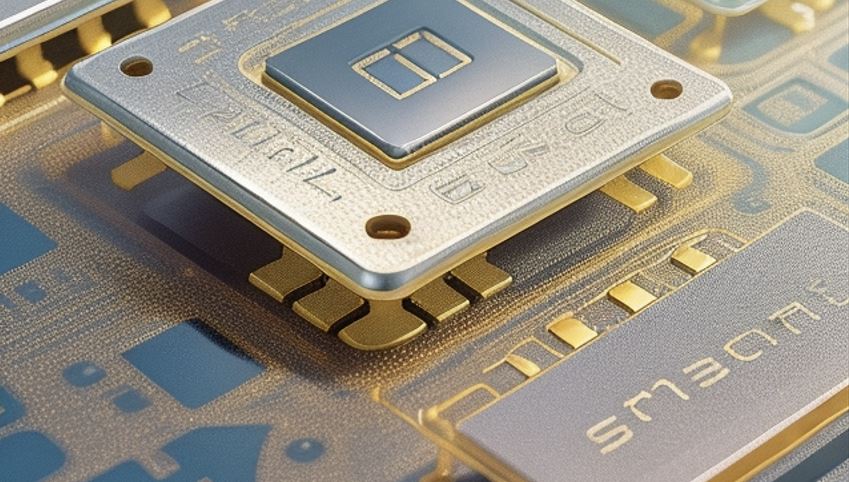Nvidia tries to bypass US export restrictions by redesigning its chips but Commerce Secretary Gina Raimondo insists US cannot let China get their most advanced chips.

Table of Contents
- Nvidia’s Chip Redesign to Bypass US Export Restrictions
- What if China achieves self-sufficiency in building advanced AI chips?
- 🌐 Sources
Nvidia’s Chip Redesign to Bypass US Export Restrictions
In recent developments, Nvidia has swiftly undertaken redesigns of its products to navigate the intricate landscape of US export restrictions. The move comes in response to the updated regulations that impact the export of certain AI chips, including Nvidia’s A800 and H800, to China. The restrictions, implemented by the US government, aim to control the flow of advanced semiconductor technology to China, a nation rapidly advancing its capabilities in cutting-edge technologies.
Commerce Secretary Gina Raimondo has been vocal about the urgency of the situation. She emphasized that the US needs to bolster its efforts in preventing China from acquiring these high-performance chips, crucial for advancements in artificial intelligence and other critical applications. Raimondo’s stance reflects the broader concern within the US government about maintaining a technological edge and national security.
The redesigned products by Nvidia, crafted to comply with the updated export restrictions, have raised eyebrows and sparked debates about the effectiveness of such measures. Critics argue that rapid redesigns might pose challenges to regulatory oversight, potentially enabling loopholes in export control mechanisms.
Nvidia, as a key player in the semiconductor industry, faces a delicate balancing act. On one hand, the company seeks to adapt to the regulatory landscape to continue its global operations, while on the other, it must navigate the intricate geopolitical dynamics surrounding technology transfer and national interests.
The US government’s warnings to Nvidia highlight the gravity of the situation. Despite Nvidia’s quick response to the export restrictions, Raimondo insists that the US must remain vigilant and proactive in preventing China’s access to these advanced chips. The Commerce Secretary has even gone as far as expressing the need for increased funding to strengthen the enforcement of these controls, underscoring the ongoing efforts to stay ahead in the technological race.
This episode also underscores the broader challenges in regulating the export of cutting-edge technologies in an interconnected global market. The delicate balance between fostering innovation, maintaining economic competitiveness, and safeguarding national security requires continual evaluation and adaptation of regulatory frameworks.
As the situation unfolds, it remains to be seen how Nvidia’s redesigned products will navigate the regulatory landscape and whether the US government’s efforts to control the export of AI chips to China will effectively achieve their intended goals.
ADVERTISEMENT
What if China achieves self-sufficiency in building advanced AI chips?
Nvidia CEO Jansen Huang said:
If China can’t buy from the United States, they’ll just build it themselves. So the US has to be careful. China is a very important market for the technology industry.
In the US-China chip war, predicting a clear winner or loser is challenging. However, the statement by Nvidia CEO Jensen Huang highlights the potential risks for the United States if China achieves self-sufficiency in building advanced AI chips. If China successfully develops its semiconductor capabilities, it could reduce its reliance on American technology, impacting the US tech industry’s market share and influence. On the other hand, the United States, by imposing stricter export controls, aims to protect its technological edge and prevent the transfer of sensitive technologies to China.
The long-term outcome will depend on various factors, including technological advancements, trade policies, geopolitical dynamics, and economic strategies pursued by both nations. Both the US and China have significant stakes in the semiconductor industry, and the evolving landscape will likely involve a complex interplay of competition, cooperation, and regulatory measures.
🌐 Sources
- Fortune - AI chip export controls on China underfunded: Raimondo
- CNBC - U.S. bans export of more AI chips, including Nvidia H800
- Slashdot - US Issues Warning To Nvidia, Urging To Stop Redesigning Chips for China
- TechSpot - US government warns Nvidia against circumventing China export
- Bloomberg - Raimondo Says Commerce Needs More Money to Halt China Chip Drive
- TechWire Asia - US chips restriction creates a ripple for Nvidia
- Bloomberg - Nvidia CEO Says US Will Take Years to Achieve Chip Independence
- CNBC - Nvidia CEO: U.S. Chipmakers a decade away from China Independence
- Marketwatch - Nvidia CEO warns of ’enormous damage’ if China chip war escalates
- Firstpost - US needs 20 years to become self-reliant in making silicon chips
- Shirley Ze Yu’s Post
Disclaimer
The content of this article is a summary gathered from various online sources to ensure a comprehensive and nuanced representation of diverse viewpoints. However, the author cannot guarantee the absolute accuracy of specific statements presented. As such, the author disclaims any liability for errors, inaccuracies, or omissions in the content.
© 2023 digitalblackboard.io